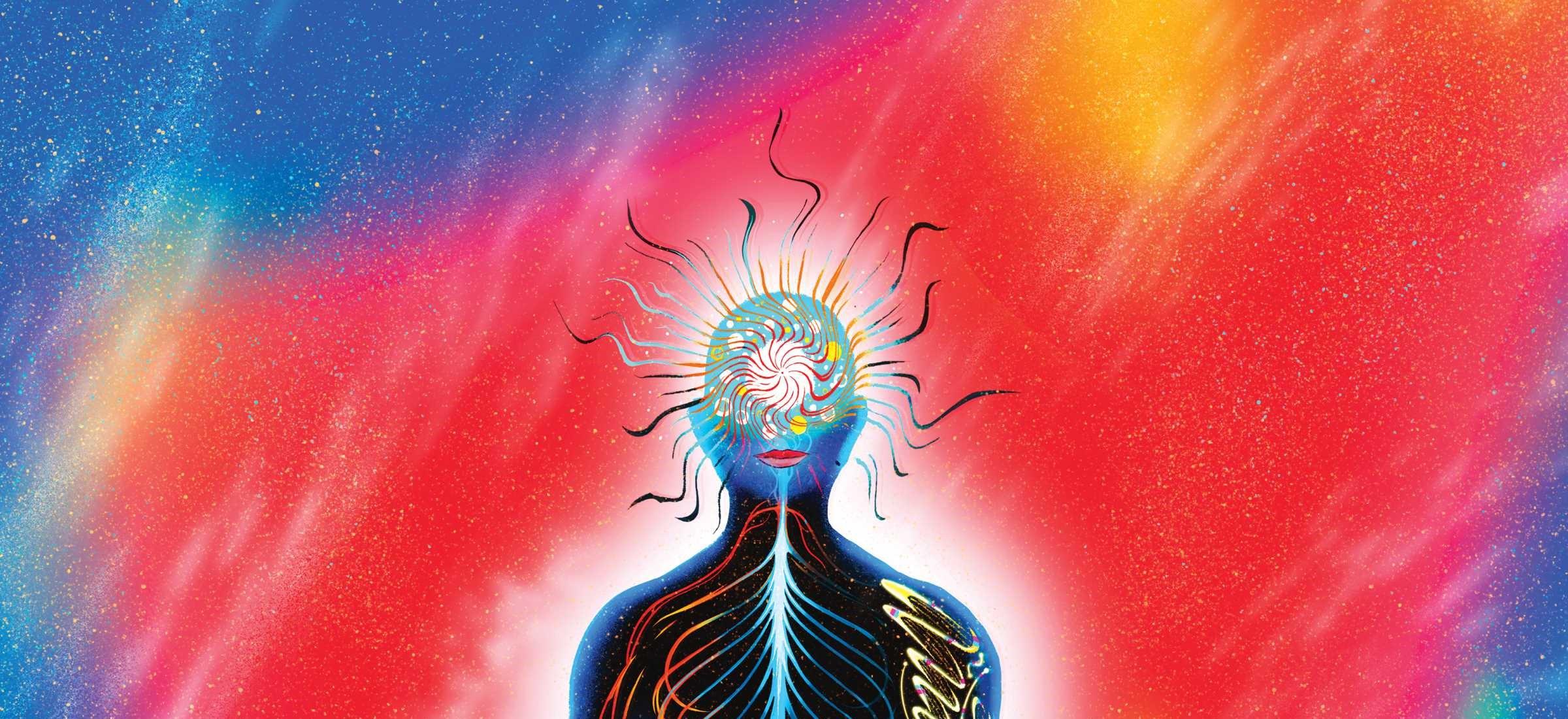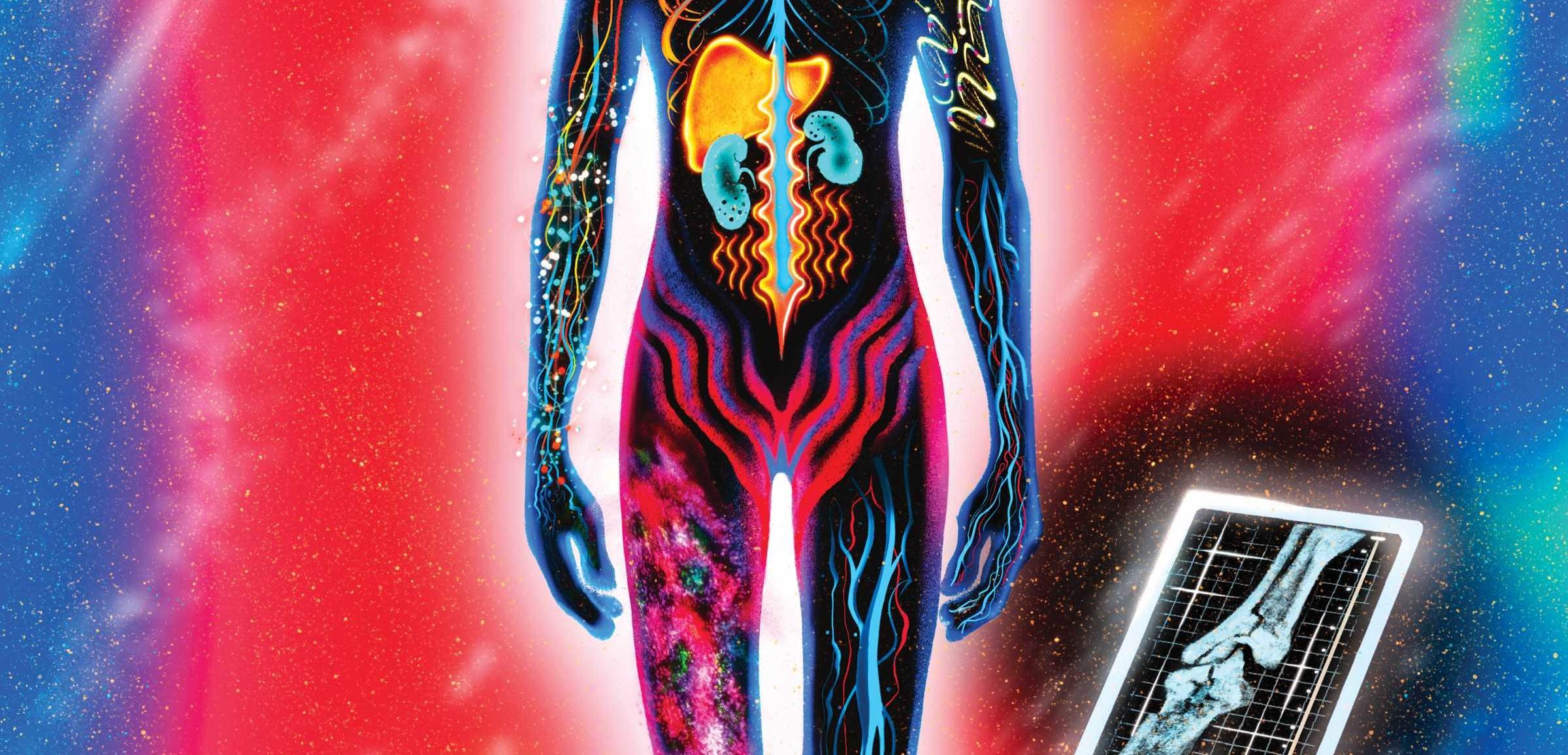Like the stone in your shoe that causes a blister to break, it’s often the little things that are the source of astonishing pain.
Health researchers at the University of Alberta respect the small stuff. Whether they’re focused on nanomedicine, tiny and telling clues in speech or on downsizing hospital-grade machines to make them more accessible in more places, they are helping all of us feel better, big-time, by thinking small.

Gentle jolts to improve focus
Researchers in rehab medicine are using mini doses of electrical current to stimulate the brain to improve memory, focus and cognition. Transcranial direct current stimulation delivers a low-intensity current via electrodes on the head, increasing blood flow much like electrical nerve stimulation in physiotherapy. Pilots, athletes and people living with dementia are among those who could benefit from the still-experimental treatment.
Speech clues for PTSD
Researchers in psychiatry and computing science have been able to identify people with post-traumatic stress disorder with 80 per cent accuracy by training a computer to analyze small clues in text data from interviews. The machine-learning model that they developed detects and categorizes negative messages and how often they pop up. It could eventually serve as an inexpensive screening tool to support health care professionals in diagnosing PTSD and other mental health disorders.
Predictive genes
Finding the right antidepressant drug and dosage takes tedious trial and error. A pilot study at the U of A’s Neuroscience and Mental Health Institute used pharmacogenomics instead. By testing a patient’s unique genetic makeup, researchers can see variations in four relevant genes and predict how that person’s body might respond. That could get patients the right treatment faster with fewer side effects.

A Host of Problems
Some types of freshwater snails spread parasites that cause schistosomiasis, one of the world’s neglected tropical diseases. Medicine can help remove the parasites and relieve symptoms, such as liver enlargement and kidney damage, in the more than 200 million people worldwide who have contracted the disease from infected water. But researcher Patrick Hanington, ’02 BSc(Spec), ’08 PhD, in the School of Public Health is targeting the mini misery-makers themselves. He’s looking for novel ways to reduce transmission by better understanding the parasite’s life cycle and why some snails make better hosts than others.
Tiny tracers target cancer cells
In collaboration with Frank Wuest in the Department of Oncology, pharmacy researcher Afsaneh Lavasanifar, ’01 PhD, is using radiotracers on nanoparticles carrying radiotherapy and/or radiosensitizer drugs to deliver more targeted therapy to cancerous cells. When a high quantity of drugs accumulates at a tumour site, a radiologist can apply radiation there, enhancing the drugs’ effectiveness.
Minute degrees of back stiffness
Lower back pain is the leading cause of disability worldwide, yet there are few ways to measure how the lower back functions. Greg Kawchuk in the Rehabilitation Robotics Lab in the Faculty of Rehabilitation Medicine developed a tool that gently presses into the lower back to measure tiny changes in stiffness in muscles, ligaments and joints around the spine. Having a reliable and objective way to measure spinal stiffness could help determine the cause of lower back disability and assess how well treatments are working.
Small squeezes for continence
About half of Canada’s adults report bladder incontinence; for those with dementia or living in long-term care, it can be as high as 80 per cent. Gerontological nursing researcher Kathleen Hunter, ’82 BScN, ’92 MNurs, ’06 PhD, teaches adults of all ages pelvic floor exercises such as kegels — tiny squeezes that strengthen the pelvic floor — as well as other techniques to support continence.
Ultrasound that’s ultra portable
A portable ultrasound system developed by radiologist Jacob Jaremko has the potential to give communities in rural and remote locations better access to medical diagnoses. The small hand-held device can screen for infant hip dysplasia, thyroid cancer and fractures. Images are uploaded via tablet and an artificial intelligence app compares them with thousands of other results to spot abnormalities.

Pre-emptive strikes against cancer
Chemical and materials engineer Hasan Uludag is zapping the defective molecules that lead to blood cancers, such as leukemia, before they can unleash havoc. Instead of targeting the cancerous proteins emitted by defective mRNA, as conventional anti-cancer drugs do, Uludag hits the mRNA with RNA-loaded nanoparticles. Since the mRNA’s structure is predictable while that of cancerous proteins is not, his method could have better odds of eliminating defective molecules and fighting the diseases.
Bandages that make sense
Diabetes causes nerve damage, known as polyneuropathy, and people living with the disease can develop complications from a foot wound without noticing it. If a foot ulcer goes untreated, amputation may be the only alternative. Researchers in nursing, engineering and neurology hope to prevent this by designing tiny sensors embedded in bandages to monitor wounds. The 3D printed sensors will be as thin as 200 nanometres, or about 1/35th the width of a human hair.

We at New Trail welcome your comments. Robust debate and criticism are encouraged, provided it is respectful. We reserve the right to reject comments, images or links that attack ethnicity, nationality, religion, gender or sexual orientation; that include offensive language, threats, spam; are fraudulent or defamatory; infringe on copyright or trademarks; and that just generally aren’t very nice. Discussion is monitored and violation of these guidelines will result in comments being disabled.